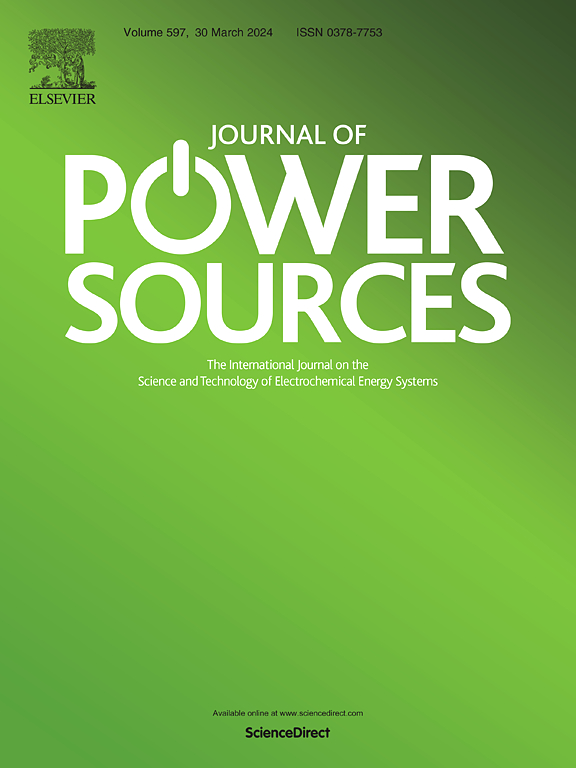Enhancing high-density battery performance through innovative single-phase spray technology in immersion cooling systems
IF 8.1
2区 工程技术
Q1 CHEMISTRY, PHYSICAL
引用次数: 0
Abstract
The flow field organization in liquid-cooled BTMS (Battery Thermal Management System) is crucial to the thermal performance of lithium-ion batteries. This study introduces an innovative single-phase spray technology to optimize the flow field and enhance thermal characteristics in BTMS. Using Computational Fluid Dynamics simulations, key factors such as dielectric fluid type, nozzle diameter, spray angle, and nozzle position are analyzed. Novec 7500 is identified as the optimal dielectric fluid, with thermal conductivity and viscosity playing significant roles. Response Surface Analysis and the entropy weight TOPSIS (Technique for Order of Preference by Similarity to the Ideal Solution) determine optimal conditions: a 0.47 mm nozzle diameter, 0 mm nozzle offset, and an 88.16° spray angle. These parameters reduce the maximum battery temperature to 25.43 °C and minimize the temperature gradient to 3.41 °C, achieving reductions of 14.20 % and 57.74 %, respectively, compared to non-spray systems. Furthermore, the system reduces the maximum temperature of a 36-cell battery module by 27.28 % to 25.33 °C and the maximum temperature difference by 69.39 % to 4.35 °C. The optimized spray cooling technology is effective for smaller battery stacks and demonstrates the potential to maintain high cooling efficiency in complex systems, providing a solution for BTMS.
通过浸入式冷却系统中的创新单相喷雾技术提高高密度电池性能
液冷电池热管理系统(BTMS)中的流场组织对锂离子电池的热性能至关重要。本研究介绍了一种创新的单相喷雾技术,以优化流场并增强 BTMS 的热特性。通过计算流体动力学模拟,对介质流体类型、喷嘴直径、喷射角度和喷嘴位置等关键因素进行了分析。Novec 7500 被确定为最佳介电流体,热导率和粘度也发挥了重要作用。响应面分析法和熵权 TOPSIS(通过与理想解决方案相似度排序的技术)确定了最佳条件:0.47 毫米的喷嘴直径、0 毫米的喷嘴偏移和 88.16° 的喷射角。与非喷雾系统相比,这些参数将电池的最高温度降低到 25.43 °C,将温度梯度最小化到 3.41 °C,分别降低了 14.20 % 和 57.74 %。此外,该系统还将 36 芯电池模块的最高温度降低了 27.28% 至 25.33 °C,最大温差降低了 69.39% 至 4.35 °C。优化的喷雾冷却技术对较小的电池堆也很有效,并证明了在复杂系统中保持高冷却效率的潜力,为 BTMS 提供了一种解决方案。
本文章由计算机程序翻译,如有差异,请以英文原文为准。
求助全文
约1分钟内获得全文
求助全文
来源期刊

Journal of Power Sources
工程技术-电化学
CiteScore
16.40
自引率
6.50%
发文量
1249
审稿时长
36 days
期刊介绍:
The Journal of Power Sources is a publication catering to researchers and technologists interested in various aspects of the science, technology, and applications of electrochemical power sources. It covers original research and reviews on primary and secondary batteries, fuel cells, supercapacitors, and photo-electrochemical cells.
Topics considered include the research, development and applications of nanomaterials and novel componentry for these devices. Examples of applications of these electrochemical power sources include:
• Portable electronics
• Electric and Hybrid Electric Vehicles
• Uninterruptible Power Supply (UPS) systems
• Storage of renewable energy
• Satellites and deep space probes
• Boats and ships, drones and aircrafts
• Wearable energy storage systems
 求助内容:
求助内容: 应助结果提醒方式:
应助结果提醒方式:


